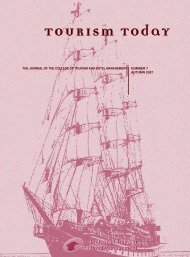The Invisible Black Victim: How American Federalism Perpetuates ...
The Invisible Black Victim: How American Federalism Perpetuates ...
The Invisible Black Victim: How American Federalism Perpetuates ...
You also want an ePaper? Increase the reach of your titles
YUMPU automatically turns print PDFs into web optimized ePapers that Google loves.
Congressional crime hearings often include lengthy testimony from criminal justice agencies<br />
detailing their work. In one typical example, a spokesman for the DEA provided an<br />
accounting of recent activities at a 1996 hearing on drug trafficking in California:<br />
Counterdrug operations during the 1990s successfully dismantled massive conversion labs in<br />
Bolivia and Peru, forcing the traffickers to abandon these large operations in favor of small,<br />
more mobile laboratories in remote locations. Also, law enforcement efforts took aim at the<br />
air transportation bridge, which was a trafficker's preferred method of transporting cocaine<br />
base from the mountainous jungles of Bolivia and Peru to the cartel operations in Colombia.<br />
This resulted in the traffickers having to abandon their air routes and resort to riskier<br />
transportation over land and water (Hearing before the subcommittee on National Security,<br />
International Relations and Criminal Justice of the Committee on Government Reform and<br />
Oversight. House of Representatives, 23 Sept. 1996, Y4.G74/7:R29/19. 98-H401-52).<br />
While criminal justice agencies were heavily represented across a wide range of hearings,<br />
there was a glaring gap in the witnesses from citizen groups who represented people living<br />
with crime on a regular basis. In the full analysis (Table 2), a paltry 7.6 percent of all<br />
witnesses were from any type of citizen group, and almost a third of all citizen group<br />
witnesses were on one side or the other of the gun debate or represented the ACLU (97/305,<br />
32 percent). By contrast, the NAACP, representing the largest and most widely recognized<br />
civil rights organization in the country, appeared at merely 12 of the 431 hearings over the<br />
30-year period.12 Other groups that might represent the interests of racial minorities<br />
appeared sporadically, such as the Congress of Racial Equality, Operation PUSH/ Rainbow<br />
Coalition, the Urban League, or El Pueblo Unido, but all together these groups constituted a<br />
virtually invisible one-half of 1 percent of all witnesses (28/3,993).<br />
When I examined just state-of-the-problem hearings (Table 3)F those hearings in which these<br />
groups might have the greatest voiceFthe picture was even more grim. Here, citizen group<br />
witnesses represented just barely 6 percent (152) of all the witnesses. Again, most of these<br />
groups represented citizens with a single-issue focus (such as gun advocates or opponents),<br />
and those with a broader scope are more likely to represent the interests of the elderly (such<br />
as the <strong>American</strong> Association of Retired Persons) than the interests of racial minorities. A few<br />
groups, such as the Children's Defense Fund and the <strong>American</strong> Friends Service Committee,<br />
have broad mandates that include the interests of low-income and minority groups; and a tiny<br />
handful of neighborhood organizations, such as United Neighborhood Organization or the<br />
Citizens' League of Greater Youngstown, appeared on rare occasions. 13 As the next section<br />
illustrates, many of these groups bring a perspective on crime and punishment that is deeply<br />
rooted in the lived urban experience of the crisis in education, unemployment, drug addiction,<br />
weak public infrastructure, and a host of negative social conditions. <strong>The</strong>ir presence in<br />
Congress, however, borders on the nonexistent.<br />
Congressional drug hearings, in particular, are notable for their lack of voice from people<br />
actually experiencing drug crime or drug addiction, particularly in the inner cities. As noted<br />
earlier, in some respects this is not surprising, given Congress's clear jurisdiction over borders<br />
and interstate transportation of illegal substances. Nonetheless, the dominance of testimony<br />
from law enforcement was particularly glaring give the complexity of the drug problem.<br />
Groups representing citizen interests of any kind were just 3 percent of witnesses at drug<br />
hearings (35/1,060), and groups that move beyond single issues and are likely to connect<br />
drugs to a wider range of social pathologies were almost entirely absent (8/1,060). Testimony<br />
from individuals unaffiliated with any groupFwhich would include victims of drug crime,














